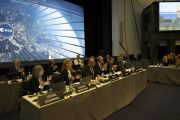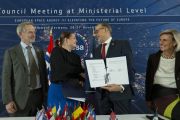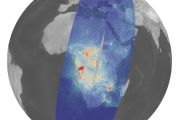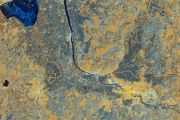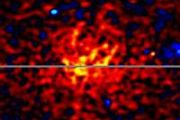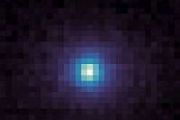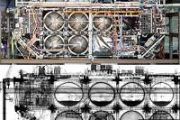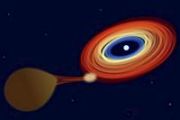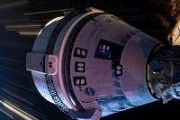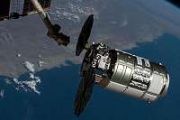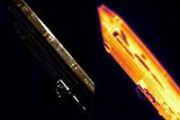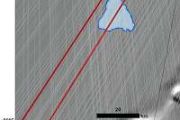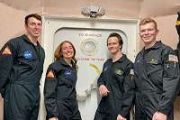
Copernical Team
Galileo launch postponed
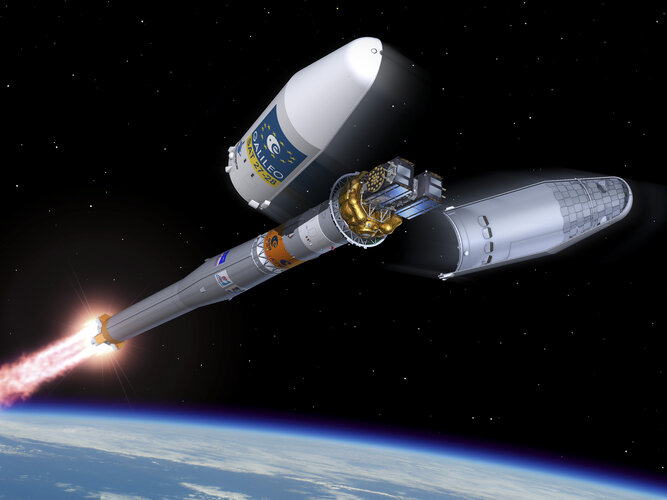
Due to unavailability of a downrange tracking station, Arianespace has taken the decision to postpone the fueling of Galileo's three stage Soyuz launcher. The VS26 Soyuz launch vehicle and the satellites are in a stable and safe condition.
A one-way phone call from Mars

This November, ESA's Mars Express spacecraft carried out a series of experimental communication tests with the Chinese (CNSA) Zhurong Mars rover. Mars Express successfully caught data sent up 'in the blind' by the rover and relayed them to Earth where they were forwarded to the Zhurong team in China.
13:07 CET, 7 November, Utopia Planitia. The Zhurong rover, commanded by the Tianwen-1 orbiter, points its radio up at the Martian sky. Any minute now, ESA's Mars Express will begin to pass overhead. Zhurong starts transmitting a signal up into space. It has no way of knowing if its message is being received.
Landers and rovers on Mars gather data that help scientists answer fundamental questions about the geology, atmosphere, surface environment, history of water and potential for life on the Red Planet.
To get these insights to Earth, they first transmit the data up to spacecraft in orbit around Mars. These orbiters then use their much larger, more powerful transmitters to 'relay' the data across space to Earth.
"Normally, an orbiter like ESA's Mars Express first sends down a hail signal to a rover as a 'hello,'" says James Godfrey, Mars Express Spacecraft Operations Manager.
Two versions of a Curiosity selfie: narrow and wide

NASA's Curiosity Mars rover took this 360-degree selfie using the Mars Hand Lens Imager, or MAHLI, at the end of its robotic arm. The selfie comprises 81 individual images taken on Nov. 20, 2021—the 3,303rd Martian day, or sol, of the mission.
The rock structure behind the rover is "Greenheugh Pediment"; the hill that is middle distance on the right, is "Rafael Navarro Mountain." Curiosity is headed toward "Maria Gordon Notch," the U-shaped opening behind the rover to the left.

Explore further
Spire Global completes acquisition of exactEarth Ltd
AFRL working to develop future workforce
 Ensuring a steady supply of technical and scientific expertise for American industry and innovation has been a national priority since about 1957 when the Soviet Union launched its first Sputnik. Today, however, with the increasingly rapid pace of high technology, the need to attract young people to the field of advanced technical manufacturing has become even more critical. To meet that need, t
Ensuring a steady supply of technical and scientific expertise for American industry and innovation has been a national priority since about 1957 when the Soviet Union launched its first Sputnik. Today, however, with the increasingly rapid pace of high technology, the need to attract young people to the field of advanced technical manufacturing has become even more critical. To meet that need, t US Senators urge Biden Admin to toughen response to incidents in space
 A bipartisan group of US Senators on Tuesday urged the Biden administration to strengthen responses to incidents in space in wake of Russia's recent anti-satellite test.
"The space domain is essential for the United States' modern economy. From fostering scientific discovery and planetary exploration to facilitating next-generation communications and the Global Positioning System (GPS), th
A bipartisan group of US Senators on Tuesday urged the Biden administration to strengthen responses to incidents in space in wake of Russia's recent anti-satellite test.
"The space domain is essential for the United States' modern economy. From fostering scientific discovery and planetary exploration to facilitating next-generation communications and the Global Positioning System (GPS), th Rocket Lab launch strengthens BlackSky Constellation by two satellites
 BlackSky has added two satellites to its constellation following the Rocket Lab "Love at First Insight" launch from Rocket Lab Launch Complex 1 on November 18. The satellites were fully operational and commercially available within six days of launch.
"This was the fastest BlackSky dual-satellite commissioning process in the company's history," said Nick Merski, BlackSky chief operations o
BlackSky has added two satellites to its constellation following the Rocket Lab "Love at First Insight" launch from Rocket Lab Launch Complex 1 on November 18. The satellites were fully operational and commercially available within six days of launch.
"This was the fastest BlackSky dual-satellite commissioning process in the company's history," said Nick Merski, BlackSky chief operations o Asteroid material deposited during large impacts record the moon's ancient magnetic field
 The moon has no core dynamo magnetic field, but spacecraft detect numerous strong localized magnetic fields in the crust of the moon. Many of these magnetic anomalies are antipodal to large impact basins.
Scientists at Purdue University and the University of California, Santa Cruz, led by Brandon Johnson, Purdue associate professor of earth, atmospheric, and planetary sciences, ran impact
The moon has no core dynamo magnetic field, but spacecraft detect numerous strong localized magnetic fields in the crust of the moon. Many of these magnetic anomalies are antipodal to large impact basins.
Scientists at Purdue University and the University of California, Santa Cruz, led by Brandon Johnson, Purdue associate professor of earth, atmospheric, and planetary sciences, ran impact Dragons-Eye View
 It can be hard to appreciate that a human-made, football-pitch-sized spacecraft is orbiting 400 km above our heads, but there it is.
The jewel of human cooperation and ingenuity that is the International Space Station shines brightly in this image captured by ESA astronaut Thomas Pesquet from the SpaceX Crew Dragon Endeavour.
Crew-2 got these amazing views during a flyaround of the o
It can be hard to appreciate that a human-made, football-pitch-sized spacecraft is orbiting 400 km above our heads, but there it is.
The jewel of human cooperation and ingenuity that is the International Space Station shines brightly in this image captured by ESA astronaut Thomas Pesquet from the SpaceX Crew Dragon Endeavour.
Crew-2 got these amazing views during a flyaround of the o Lead 'em then leave 'em: tech founders who quit
 Former Twitter CEO Jack Dorsey joins a long list of tech gurus who've quit the companies they founded. But what makes them step aside - and is it good for business?
From Microsoft's Bill Gates to Amazon's Jeff Bezos, most of the people who created the Silicon Valley giants that dominate our lives have since handed the reins to someone else.
"There's a lot of talk about the importance o
Former Twitter CEO Jack Dorsey joins a long list of tech gurus who've quit the companies they founded. But what makes them step aside - and is it good for business?
From Microsoft's Bill Gates to Amazon's Jeff Bezos, most of the people who created the Silicon Valley giants that dominate our lives have since handed the reins to someone else.
"There's a lot of talk about the importance o 








